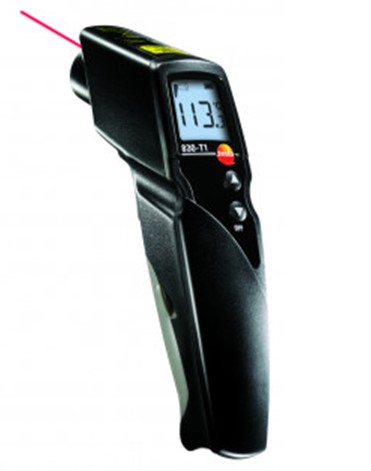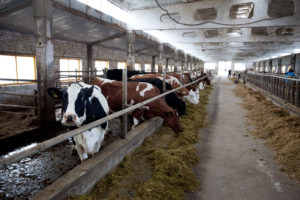Reorientation of Russian pork producers to the external market: challenges and prospects

Market status
According to the National Union of Pig Breeders, in 2024 , the volume of pork exports from RUSSIA increased by more than a third, reaching 320 thousand tons. This is 6-7% of the total volume of pork production in the country. In April 2025, the wholesale price of MEAT was 144 rubles per 1 kg of live weight, which is 1% more than the previous week and 25% higher than in the same period last year.
However , prices for different parts of the carcass vary. For example, brisket on the bone increased in price by 29%, reaching 258 rubles per 1 kg, while ham increased in price by only 3%, to 265 rubles. Shoulder and neck increased in price by 5% and 6%, respectively. it is important to note that pork is rising in price more slowly than other types of meat: over the year, it has increased in price by only 8.9%, while beef and lamb have risen in price by 14.8%.
Reasons for the reorientation
The main reason for the reorientation to EXPORT is the decrease in the marginality of pig farming, which currently stands at about 15%, which is half the figure for previous years. The main factors contributing to this fall include:
1. Rising feed prices: The share of feed in the cost of pig farming reaches 60-70%. In recent years, feed prices have increased significantly, which negatively affects profitability.
2. Rising costs: Increased costs of salaries, electricity and fuel also puts pressure on business profitability.
3. Inflation: Annual inflation in March 2023 was 10.3%, which further complicates the financial situation of producers.
Export Opportunities
Despite the difficulties, export markets offer new opportunities for Russian pig farmers. For example, pork prices in CHINA are twice as high as in Russia, making exports attractive. However, not all promising areas are available to Russian producers. In particular, European markets remain closed due to veterinary restrictions, which limits growth opportunities.
In addition, South Korea and other Asian countries are also of interest, but require strict quality and safety standards for products. This may become an additional challenge for Russian producers, who must adapt to international requirements.
Future Prospects
According to expert forecasts, in the next 3-5 years, Russian pork producers may face a reduction in production volumes. This is due to the continuing decline in profitability and rising costs. However, if export deliveries are established and new markets are reached, this may compensate for domestic problems.
In conclusion, the reorientation of Russian pork producers to the foreign market is a response to the challenges facing the industry. Although the situation remains difficult, the potential benefits from exports may become a key factor for the sustainable development of pig farming in Russia.
Read together with it:
- Беларусь и Алтайский край намерены увеличить биржевую торговлю сельхозпродукцией23 октября, Минск. Поставки белорусской мясомолочной продукции в Алтайский край и закупки зерна и семян для аграрного сектора Беларуси определены в качестве магистральных направлений сотрудничества в сфере электронной биржевой торговли. Такая договоренность достигнута по результатам встречи представителей Белорусской универсальной товарной биржи с делегацией деловых кругов Алтайского края, которая...
- Modernization of poultry farming in the Nizhny Novgorod region: new opportunities and production growthThe project, implemented under the regional preferential lending program, allowed the Russkoye Pole agricultural holding to invest 440 million rubles. Regional Agriculture Minister Nikolai Denisov reported that the organized sector produced 88,400 tons of poultry MEAT in 2024 , with an expected increase to 93,8......
- Rostov wholesaler Everest is merging with a loss-making meat supplier from Donetsk.Donskie Traditsii, a wholesale MEAT supplier operating in Donetsk since 2017, saw its revenue decline by 28% in 2024 , to 273.1 million rubles, while losses narrowed from 14.4 million rubles in 2023 to 5.3 million rubles. In contrast, Everest increased its revenue by 16% to 3.6 billion rubles in 2024, although net profit declined by 24%, to 11.9 million rubles. Creditors of Donskie Traditsii can f...
- US: Pork market has shown mixed performance in recent monthsBeef Price Impact Recent events in the beef market have become a significant factor, also affecting the pork industry. In particular, US President Donald Trump's statements about possibly increasing beef imports from Argentina to lower prices provoked a strong reaction among producers. Many of them viewed this as a threat to their businesses and free market principles. However, experts note that A...
- Argentine Beef Imports: Challenges for American FarmersOn Sunday , Trump announced that he was considering partial imports of Argentine beef, emphasizing that this would help a "good ally"—Argentina—while lowering domestic MEAT prices . This measure was part of a broader strategy in which his administration approved a $20 billion currency swap to support the Argentine economy. However, as the National Beef Association (NCBA) notes, such an initiative ...
- Donald Trump said the US will buy more Argentine beef to lower prices.US President Donald Trump said today during his flight aboard Air Force One from Florida to Washington that this is the first indication of what benefits or trade improvements the United States could offer Argentina. He stated that the northern country could purchase more Argentine beef. "We'll buy beef from Argentina," the White House chief told the reporters accompanying him. "If we do that," he...




























































